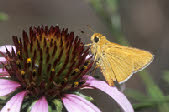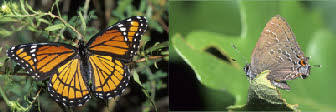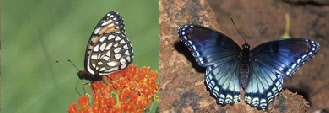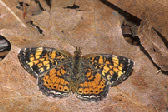The Butterflies of the World Foundation
A Non-




Zebra Swallowtail
Eurytides marcellus (Cramer, 1777)
Subfamily Papilioninae
Tribe Leptocircini
All photographs, artwork, text and website design are the property of The Butterflies of the World Foundation (unless otherwise stated) and are protected under national and international copyright laws. Photographs, artwork or text on this website may not be reproduced in any way without prior written consent of The Butterflies of the World Foundation.

Eurytides marcellus, Ouachita National Forest, Beech Creek, Le Flore County, Oklahoma,
4 June 2011 Ref
#: I-
Taxonomy
There are about 600 species within the family Papilionidae. The family is made up of 3 subfamilies, the Parnassiinae, which has about 50 species of Parnassians and Apollos that are found mostly in the montane regions of the nothern hemisphere, the Baroniinae, which has only 1 species, Baronia brevicomis from western Mexico, and the Papilioninae, which has about 550 species found worldwide. The subfamily Papilioninae is further divided into 4 tribes, the Teinopalpini, which include 2 species from the Himalayas, the Troidini, which has about 130 worldwide species including the birdwings, the Leptocircini, which has about 140 species and includes kite Swallowtails, and the Papilionini, which has over 200 worldwide species. Eurytides marcellus belongs to the tribe Leptocircini.
General Information:
Eurytides marcellus is an instantly recognizable butterfly found in the southeastern forth of the U.S. It can be very common and it avidly collects nectar from many flowers. Males can also be found in numbers imbibing minerals from the edges of lakes, rivers, and puddles on gravel roads. Look for it in moist woodlands, fields with nectar near woodlands and brushy areas. It can also show up in gardens.
Lifecycle:
Larval hostplants are shrubs of the genus Asimina (pawpaw) in the Annonaceae family. Young plants are preferred. Males fly in the understory near host plants to find females. Females lay single green eggs on lower leaves of host plant. Caterpillars live and feed on the underside of these leaves, then pupate and hibernate there.

Eurytides marcellus, Ouachita National Forest, Beech Creek, Le Flore County, Oklahoma,
4 June 2011 Ref
#: I-

Eurytides marcellus, Ouachita National Forest, Beech Creek, Le Flore County, Oklahoma,
4 June 2011 Ref
#: I-

Eurytides marcellus, Ouachita National Forest, Beech Creek, Le Flore County, Oklahoma,
4 June 2011 Ref
#: I-

Eurytides marcellus, Ouachita National Forest, Beech Creek, Le Flore County, Oklahoma,
4 June 2011 Ref
#: I-

Eurytides marcellus, Ouachita National Forest, Beech Creek, Le Flore County, Oklahoma,
4 June 2011 Ref
#: I-

Eurytides marcellus, Ouachita National Forest, Beech Creek, Le Flore County, Oklahoma,
4 June 2011 Ref
#: I-

Eurytides marcellus, Ouachita National Forest, Beech Creek, Le Flore County, Oklahoma,
4 June 2011 Ref
#: I-
